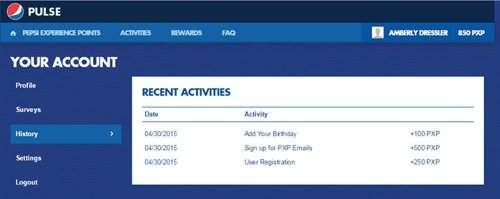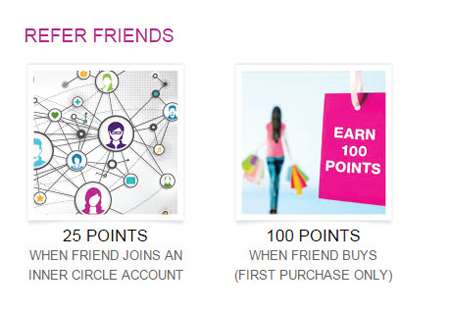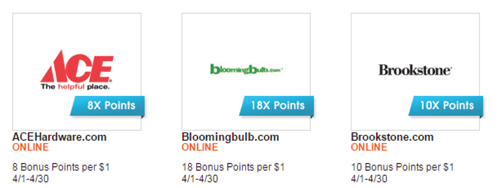6 Ways to Maximize Customer Loyalty Programs

Loyalty today is about more than just discounts and free samples. It's the aspect of a strategy that allows companies to connect with customers, start conversations, and reward them for their engagement and dedication.
In today's multichannel world, it's crucial that businesses focus on their customers and enhance individual experiences with targeted, meaningful offers. After all, loyalty has expanded from a "spend-and-get" mentality to one centered on nurturing relationships between purchases.
Here are six loyalty marketing examples that illustrate how companies can spark action with engagement- based loyalty strategies.
1. Obtain valuable consumer data through profile updates
Consumers today expect businesses to know them and cater to their needs; accomplishing this goal is all about capturing and using customer data effectively. To achieve more lasting connections, companies should make every effort to learn as much as possible about their customers. For example, one tactic brands are finding successful is incentivizing loyalty program members to update their profiles to make sure they have the most relevant and up-to-date information. Case in point: Participants in the Pepsi Experience Points (PXP) loyalty program earn additional points for adding their gender, birth date, mailing address and phone number. After capturing the information, Pepsi puts the data to good use by sending customers a small gift or offer on their birthdays, or surprises them with a coupon offer in the mail. By offering the proper motivation, Pepsi is gaining additional insight into their customers, which allows the company to make marketing messages more relevant.

2. Leverage the popularity of social media for referrals
Social media is more popular than ever, so incorporating it into any multi-channel loyalty strategy to engage consumers is a must. Not only can the channel help companies acquire new customers, but it also gives fans a vehicle to promote a brand through positive word-of-mouth directly to their networks. For example, StriVectin, a cosmetics brand, rewards members with loyalty points when they refer a friend (through social networks) to join their Inner Circle loyalty program. Additionally, the company offers four times the amount of loyalty points to members when their friends make a purchase from the brand. This kind of incentive plan shows how much companies truly value customer referrals.

Instagram for Insta-Growth
See how and why the image-heavy social network should be used in your brand's loyalty strategy at wsm.co/growthinsta
3. Offer unique, cutting-edge experiences and rewards
It's important that fans feel truly valued for their engagement. With the saturation of loyalty programs in today's marketing landscape, this means that they must be unique, as doling out the same rewards simply won't cut it. Today, customers not only expect brands to know them, but they also demand extra special rewards and recognition for their loyalty. Take Royal Caribbean as an example. The brand understands the importance of making guests feel appreciated by hosting VIP events. As part of its Crown and Anchor Society loyalty program, Royal Caribbean invites members to special parties and events to recognize repeat customers. By inviting customers to these special events, Royal Caribbean is generating excitement around its brand, and enhancing its image to further promote customer loyalty.
4. Tap into the growing influence of reviews
Consumers today live in a world where they base product and brand decisions on experiences of their peers. In this digital environment, shoppers can access information about brands almost instantaneously. And what better way for consumers to learn about new products than from a peer review? Lancôme, for example, lets members of its Elite Rewards program earn points for posting product reviews. By giving shoppers a vehicle to offer feedback, the company is creating a dialogue with customers, learning what they like about their products and services while also encouraging others to buy from, and stick with, the brand.
5. Drive digital engagement with online sweepstakes
To engage digitally focused consumers today, companies should also offer fun ways for people to interact as much as possible. For example, social and digital sweepstakes-a highly effective engagement tactic-help brands connect with consumers outside of the store walls. Fresh Step, among others, allows loyalty program members to use earned points to gain sweepstakes entries. Participants can increase their chances of earning a desired reward by using additional loyalty points. Online sweepstakes also give consumers multiple reasons to keep coming back, especially if brands are running a daily entry campaign. This strategy allows companies to help members use loyalty points quickly, reducing the programs cost and any potential liability.
6. Don't forget the tried-and-true partner strategy
Despite the recent changes to the industry, traditional loyalty programs still work. Only today, they are much more effective when companies tie in multichannel loyalty and engagement initiatives. Still, spend-and-get programs that offer customers a chance to earn rewards with partner brands remain appealing. Sony is one brand that lets customers increase their point-earning capability for shopping with partner retailers through its Points Plus program.

For example, members earn points per dollar spent with their favorite participating retailers across a range of categories, including apparel and accessories, beauty, games and electronics, music and sporting goods. For brands, the strategy of aligning with non-competitive brands strengthens partnerships, which often leads to increased visibility and sell through.
Geoff Smith leads the marketing team at CrowdTwist where he is responsible for developing thought leadership and innovative ROI-focused programs designed to build client and prospective client relationships.







